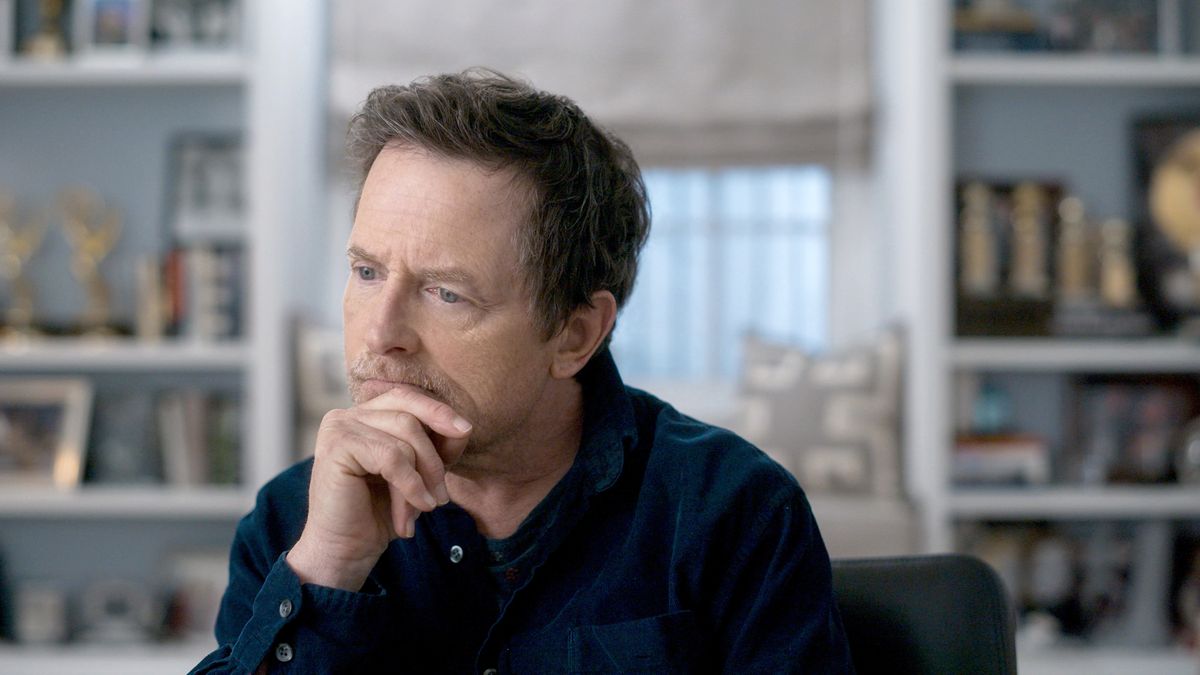Movie Review: ‘Still: A Michael J. Fox Movie’ shows actor in a vulnerable light

“Still: A Michael J.Fox Movie” opens with a reenactment of the moment when the film’s subject, the star of the “Back to the Future” film trilogy and the sitcoms “Family Ties” and “Spin City,” experienced the first symptom, while filming “Doc Hollywood” in 1990, of what would come to be diagnosed as Parkinson’s disease.
“I woke up with a ferocious hangover. I placed my left hand across the bridge of my nose to block the sunlight. A moth’s wing fluttered across my right cheek. I put my hand in front of my face so I could finger-flick the little beastie across the room. That’s when I noticed my pinkie: auto-animated. … The trembling was a message from the future.”
The scene in the new, formally inventive and emotionally powerful documentary by Davis Guggenheim (“He Named Me Malala”) – based on several memoirs written by Fox, and liberally borrowing snippets of their text as narration – is shot using a combination of a body double for the then-29-year actor and clips from his films. It segues to a more recent shot of Fox, who turns 62 next month, getting out of bed and putting his slippers on.
The rest of the film incorporates new sit-down interviews (with Fox and his wife, Tracy Pollan), scenes at home with their kids and archival footage, along with more film and TV clips and reenactments, giving “Still” the air of a time-travel drama, as its subtitle suggests. The effect doesn’t come off as gimmicky, but rather makes for a deeply poignant story, told largely in Fox’s own words. Those that are spoken by the actor in response to Guggenheim’s questions can be halting and sometimes slurred, in stark contrast to the film’s more precise narration, some of which we see Fox recording for an audiobook with a speech therapist. Fox’s most recent memoir, “No Time Like the Future: An Optimist Considers Mortality,” came out in November 2020.
The consideration of mortality looms large here. Guggenheim asks Fox at one point about the source of an obvious injury to his face: a fall that resulted in a cheekbone fracture and pins in his skull. Other broken bones – common to those with Parkinson’s – are mentioned, and we see the actor take an alarming tumble on the sidewalk while working out with his physical therapist. When Guggenheim asks Fox to reflect on something 20 years from now, the actor replies that, if he’s even around at that point, he will be either cured or a “pickle.”
The joke is one of many that Fox drops in a conversation that conveys how excruciating it must be to have largely been robbed of the ability – or at least the circumstances – to make audiences laugh on a regular basis. Seeing Fox today (in pain, as he finally notes toward the end of the film) and then seeing him in the old clips that are ingeniously woven into the story that Guggenheim and his subject want to tell – voluble, hyperactive, a ball of nervous energy – makes for a bold and bravely vulnerable form of nonfiction narrative.
The title of “Still” is of course ironic. Fox says he wouldn’t know what it was like to be motionless, even before his diagnosis. But it also has another meaning: Michael J. Fox hasn’t given up yet. He still has an immensely likable and funny on-camera persona, and now he is using that gift – along with a different one, this nakedly honest film memoir – to share hope, joy and perhaps a sense of acceptance with others.